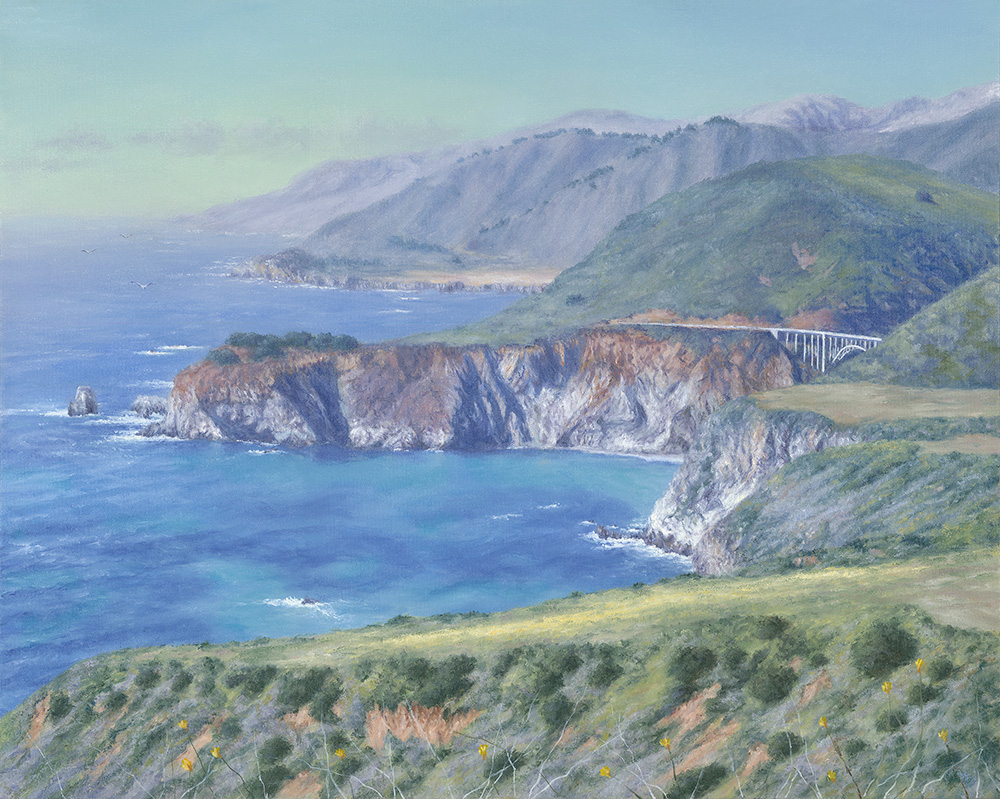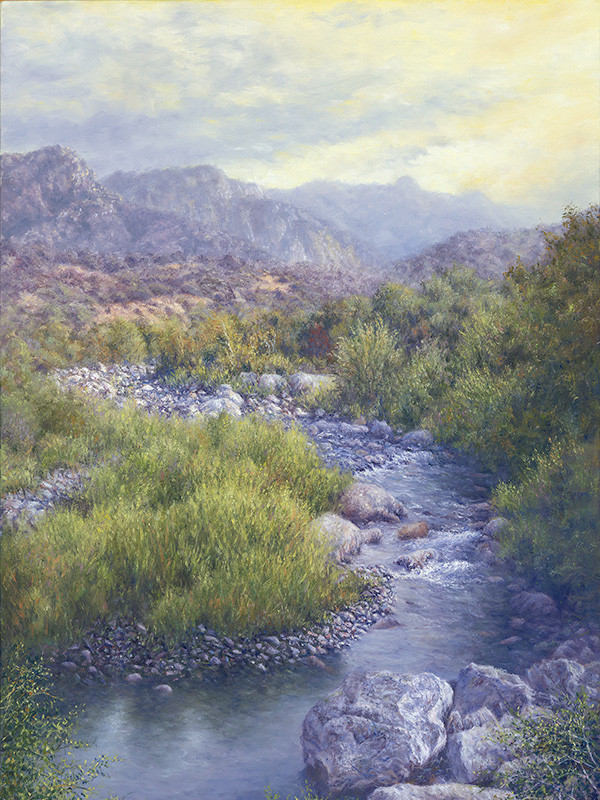
Sequoia National Forest
In 2020, when COVID-19 shut down the US and most of the world, I thought it would be a good time to work on paintings and increase my inventory. But it was a strange time for everyone, and I found it difficult to focus on painting. So, instead, I did something I wanted to do for years. I wrote a book, or more of a guide, on the fundamentals of painting for visual artists. In the following story, I have included excerpts from the introduction and snippets from the first chapter on composition.
Introduction
A painter’s narrative is a visual experience of energy, light, and color. Learning how to capture that experience takes dedication, creativity, observation, and discovering how to ask yourself the right questions.
I personally believe that a successful artist will also have a natural instinct, an innate ability to see and translate the world around them with vision and understanding. Some things cannot be taught and it is within those types of individuals that great art can be created.
As visual artists, we are constantly engaged with a need to better understand the fundamentals of painting. As colorists, we can spend our entire life studying just the principles of color. Add other elements such as value, composition, and light, and it becomes a lifetime of learning.
Art is a means of telling a story. To help better convey that story as a painter, learning the basic fundamentals and techniques of painting are enormously important, and learnable. But good story telling in a work of art doesn’t emerge from just knowing the elements of painting, or from one’s spontaneous urge to create. As we listen to life’s lessons and visualize our world, the real success comes from hard work and hours of practice. Success of a painting emerges from commitment, passion, and the internal spirit of the artist.
Composition
“It is not the most beautiful painting I have ever seen, but I can’t look away.” What is it that makes the painting so enthralling; the way the light hits the swaying tree tops, the color of the clouds hanging effortlessly in the evening sky, the powerful contrast between the background and foreground, or maybe it is simply the way it is put together? That is, the composition.
Composition is the visual arrangement of the elements within a painting. It’s the layout or symphony of design within a picture. A skillful composition will harmonize with pleasure through the balance of information.
When building a home, the first element of the building construction is the foundation which supports the structure. Without a solid and level foundation, the rest of the structure would be unstable. For the artist, the composition is the foundation on which to build. A solid foundation will retain balance between the main elements of the painting, and pull the observer in and around the picture while keeping their interest.
Part II – Excerpt from the Fundamentals of Painting
This excerpt is a continuation of Composition from the first chapter (above).
Composition Types
The simplest and most common type of composition is that in which the main subject is centered on the canvas. This method draws the attention of the observer to the middle of the picture, known as a focal point.
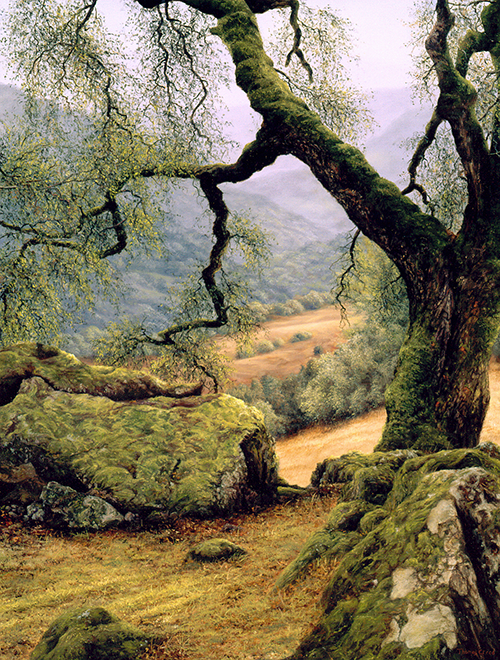 Focal Point
Focal Point
The main subjects in this painting, the oak tree and moss-covered rocks, convey a strong center of interest, pulling the viewer into the picture.
For years, artists have been using this technique, but it is not without controversy. Generally speaking, the center of the canvas is to be avoided unless you strategically add other underlying elements such as multiple subjects, preferably odd numbers, contrast in lights and darks, warm and cool colors, etc.
Division of Space
Another method to help you establish a satisfying composition is to divide the canvas into thirds. This technique allows you to place your focal point in one of the three points of interest.
The Golden Ratio
The Golden Ratio uses a mathematical equation to divide a canvas into geometric relationships. Also referred to as the Golden Mean, this method helps create a point of interest for a pleasing composition.
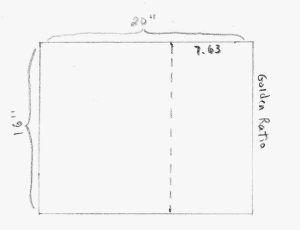
To create the Golden Ratio from an existing rectangle such as a 16″ x 20″ canvas, divide the width of the canvas, 20” for example, by 2.62, or approximately 5/8.
20/2.62=7.63. By drawing a vertical line at that measurement on your canvas, it becomes a point of interest.
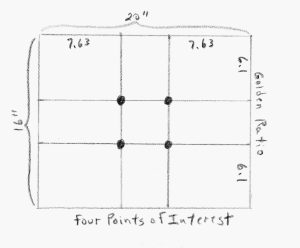
To create four points of interest using the Golden Ratio, draw a vertical line from the left using the same measurement 7.63. For a horizontal ratio, divide the height, 16” by 2.62. 16/2.62=6.1. This is similar to dividing a canvas into thirds, but in this ratio the lines are offset closer to the center.
The use of all four points within a Golden Ratio simply helps you establish a good starting point for one or more points of interest.
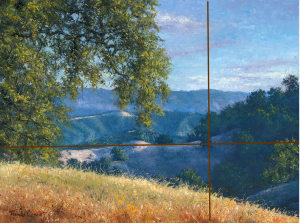
The intersection of the vertical and horizontal Golden Ratio in this painting locates a focal point.
The horizontal ratio separates the background from the middle ground, an important area for tying a landscape painting together.
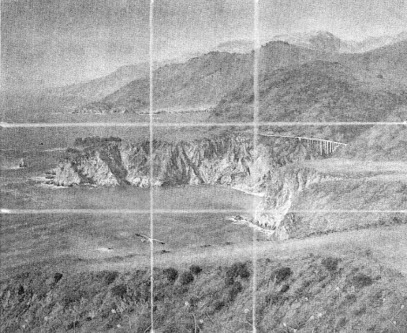
For a demanding and more complicated scene, I first used the Golden Ratio to help with my initial study and then incorporated a zigzag technique formed from the shoreline.
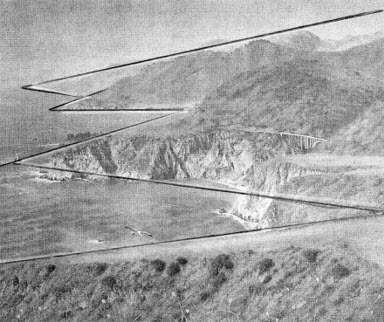
The movement and tension of a linear zigzag composition helps draw the viewer into this picture, but also reassures balance of opposing forces by connecting the warm rugged shoreline to the cool calming waters of the Pacific
Composition on a panoramic canvas has its challenges. Keeping the eyes from wandering off the picture is your first goal. In this example, I used a Golden Ratio for the horizon, then used angles of the tree tops to draw attention to the center of the drawing.
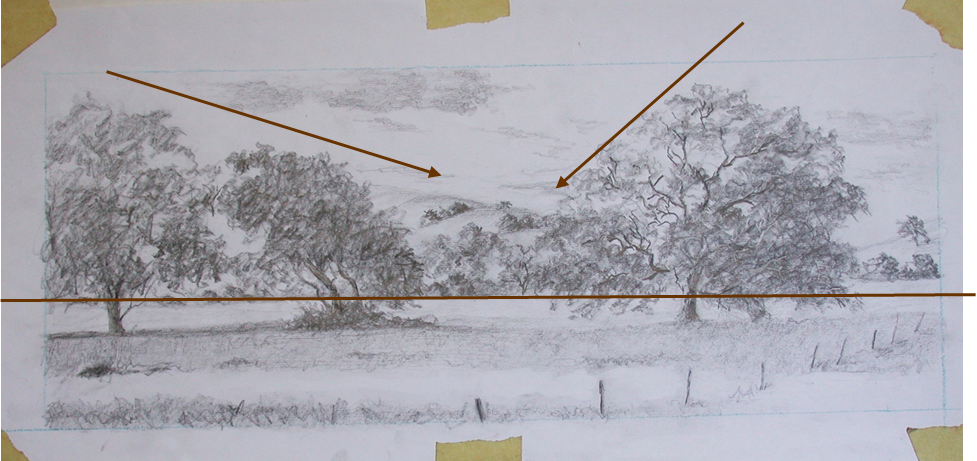
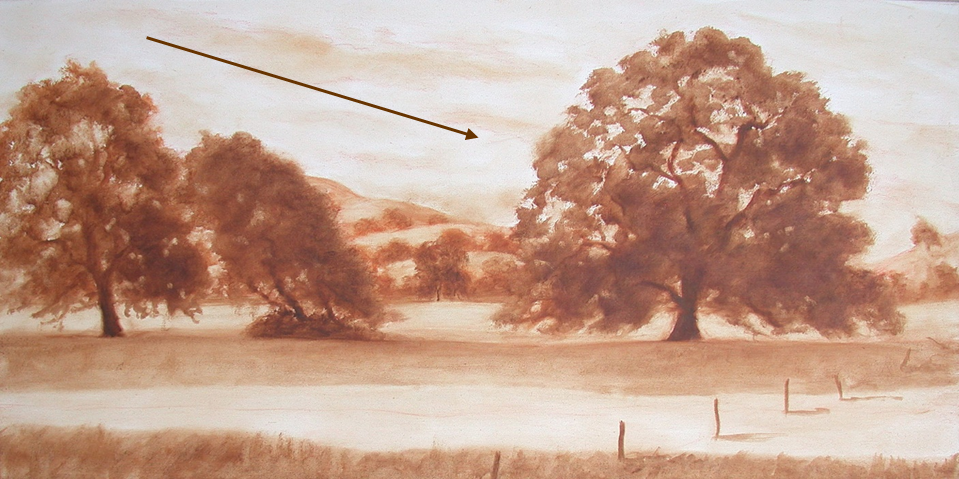
In the value study, diagonal clouds were added to further draw attention to a focal point—the distant rolling hills. Surrounding that area with darker values, and strengthening the light in the center, should keep the interest of the viewer. After visiting the oak trees and scanning the entire landscape, I want the observer back at the focal point.
